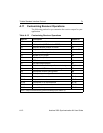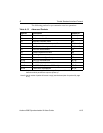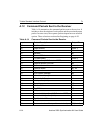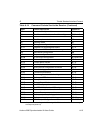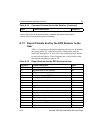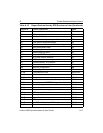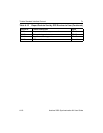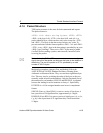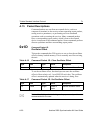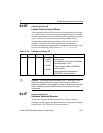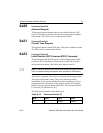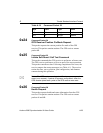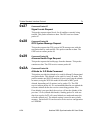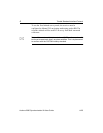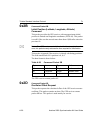
Acutime 2000 Synchronization Kit User Guide A-19
A Trimble Standard Interface Protocol
A.14 Packet Structure
TSIP packet structure is the same for both commands and reports.
The packet format is:
<DLE> <id> <data string bytes> <DLE> <ETX>
<DLE> is the byte 0x10, <ETX> is the byte 0x03, and <id> is a
packet identifier byte, which can have any value except for <ETX>
and <DLE>. The bytes in the data string can have any value. To
prevent confusion with the frame sequences <DLE> <id> and <DLE>
<ETX>, every <DLE> byte in the data string is preceded by an extra
<DLE> byte ('stuffing'). These extra <DLE> bytes must be added
('stuffed') before sending a packet, and removed ('unstuffed') after
receiving the packet.
!
Note – A simple <DLE> <ETX> sequence does not necessarily
signify the end of the packet, as these can be bytes in the middle of a
data string. The end of a packet is <ETX> preceded by an odd
number of <DLE> bytes.
Multiple-byte numbers (integer, float, and double) follow the
ANSI/ IEEE Std 754 IEEE Standard for Binary Floating-Point
Arithmetic as illustrated below. They are sent most-significant-byte-
first. This may involve switching the order of the bytes as they are
normally stored in Intel-based machines. Only the fractional part of
the mantissa for real numbers, SINGLE and DOUBLE, is reported
because the leading bit on the mantissa is always 1. Specifically:
INTEGER is a 16-bit unsigned number sent in two's complement
format.
SINGLE (float, or 4 byte REAL) is sent as a series of four bytes; it
has a precision of 24 significant bits, approximately 6.5 digits.
DOUBLE (8 byte REAL) is sent as a series of eight bytes (a, b, c, d, e,
f, g, h); it has a precision of 52 significant bits, a little better than
15 digits.




